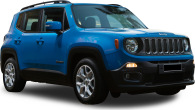We live in a tumultuous time for the internal combustion engine.
Automakers around the world are struggling to keep up, with the pressure on in many markets to hybridise to keep up with not just regulations, but now, demand.
Japanese automakers are at the thick of it. Toyota has spent 20 years building a hybrid legacy, which is only now being widely appreciated.
Subaru followed suit early in 2020 with its well-received Forester and XV hybrids, and Nissan will soon be playing the semi-electrified game, too. Mitsubishi, meanwhile, is full steam ahead with plug-ins.
So where does that leave Mazda? The brand clung to its fun-to-drive ethos while others wallowed in CVTs and dull drivetrains, but with a falling market share and no mainstream hybrid tech in sight, how has the brand filled the gap?
It has done so with the new engine that resides under this car's bonnet: the SkyActiv-X. It’s designed to push the brand’s combustion technology to new efficiency heights, but can it keep up with the pack, or will it be an interesting footnote in history? We took a SkyActiv-X CX-30 for a week to find out.
Mazda CX-30 2021: X20 Astina (Awd) M Hybrid
| Engine Type | Inline 4, 2.0L |
|---|---|
| Fuel Type | Unleaded Petrol/Electric |
| Fuel Efficiency | 6.0L/100km (combined) |
| Seating | 5 |
| Price From | $30,140 - $36,300 |
| Safety Rating |
|
Does it represent good value for the price? What features does it come with?
This is now the most expensive Mazda small SUV you can buy. The CX-30 X20 Astina comes in at $46,490, before on-road costs, or $3000 more than the next model down, the G25 Astina.
It's more expensive than a larger CX-5 GT, and almost as expensive as a base seven-seat CX-8 Touring.
Ouch. The CX-30’s key rivals come in the form of the Toyota C-HR Hybrid ($37,665), Subaru XV Hybrid ($35,580), and you could argue with this car’s luxury aspirations, the Lexus UX 250h (h for hybrid - $50,000).
.jpg)
There are not yet fuel-sipping versions of the Nissan Qashqai or Mitsubishi Eclipse Cross, but the CX-30 will soon have an even tougher fight on its hands as there are hybrid and plug-in versions on the way for each one respectively.
So, it’s clear at the very least from that collection of price comparisons, the choice to go SkyActiv-X will have to be a deliberate one.
Visually the CX-30 is sleek inside and out, and Mazda backs it with high equipment levels across the range. You can only pick the new SkyActiv-X technology in top-spec, all-wheel drive, Astina trim.
.jpg)
Included is full leather interior trim (very Lexus), full LED exterior light fittings with automatic high-beams, 18-inch alloy wheels, an 8.8-inch multimedia screen with Apple CarPlay and Android Auto connectivity, digital radio, built-in navigation, and a 12-speaker premium Bose audio system, a semi-digital dash cluster, 10-way driver’s seat power adjust, heated front seats, a sunroof, dual-zone climate control, 360-degree top-down parking camera suite, as well as keyless entry and push-start ignition.
There’s an equally-well equipped safety suite which we’ll delve into later. It’s worth noting that while this seems like a lot of equipment, lower grade cars in the CX-30 range get most of the necessary key items on that list, and visually it’s even hard to separate them with the Astina and X20 badges bringing no special flair.
Finally, although this is the bells-and-whistles grade, it is still missing advanced connectivity like USB-C, wireless phone charging, a Wi-Fi hotspot or an SOS function which are becoming notable extras in some rivals.
.jpg)
Is there anything interesting about its design?
Yes and no. The CX-30 is as slick as it is subdued, but I think many will like its classy curves and signature chrome-embossed grille, but it’s also less controversial-looking than the Mazda3 hatch on which it is based.
What could be a bit of a let down here is how ‘normal’ it looks compared to the rest of the Mazda range, especially for the big sums of cash this SkyActiv-X Astina costs.
Still, to many, the LED lights, large alloys and tidy panelwork will make it even more appealing than something like a Lexus.
Inside is a plush place to be, with leather trimmed everything, a primo-styled dash and raised centre console area, and soft-touch surfaces pretty much everywhere, even in spots you’re not likely to touch. The delicate leather-bound wheel is a particularly nice element.
.jpg)
The choice to place the screen distantly and almost embedded in the top of the dash is an odd one but serves to remind that it isn’t actually a touch panel.
I also like the styling of the semi-digital dash elements, but the customisation on offer is poor, with three display modes, two of which are useful.
The tasteful chrome touches also continue the exterior theme to the inside, and it’s all backed by nice feeling switchgear and well-integrated fittings.
The only things I’d do away with here are the brown highlight trims (a matter of personal taste) and gloss-black finishes down the centre console (never easy to keep clean).
While the whole package is slick and inoffensive, there’s nothing to suggest the SkyActiv-X version is different in any way, no cool textures or alternate trim options or neat hidden patterns. It’s disappointing from a brand that used to hide rotary motifs everywhere on long gone cars like the RX-8.
.jpg)

How practical is the space inside?
The CX-30 sits in an emerging small SUV segment. It’s confusing now that there is also a light SUV segment for cars like its CX-3 sibling. This car’s most likely rivals all offer a decent practicality promise over their smaller offerings. Cars like the C-HR, Eclipse Cross and Nissan Qashqai all fall into this category.
The CX-30 though isn’t quite this way. While it brings welcome improvements over the relatively tiny-on-the-inside Mazda2-based CX-3 it also doesn’t wow us with a tricky seating arrangement or particularly large boot.
.jpg)
It’s the front passengers that sit in relative opulence, with a large and adjustable cabin space, plush textured materials and plenty of glass for good visibility. There is also telescopic and height adjust for the wheel, and a weirdly small sunroof considering we are well and truly in the era of panoramics. Still, head and arm room is excellent.
On a side note, I don’t like the wing-mirrors in this car. They sit on the doorframe quite close to the driver and provide a limited field of view, reducing overall visibility.
Less good is the rear seat. The arrangement is noticeably ‘stadium’ (meaning you sit much higher up than front occupants) leaving you with limited headroom. The design of the doors and high windowline also make it a tad claustrophobic, while leg- and arm-room is limited but sufficient for someone my height (182cm/6'0").
.jpg)
Finally, there is the boot. It is also a bit limited on space, making the CX-30 one of those SUVs that doesn’t gain any extra room for its jacked-up shape. In fact, its 317-litre (VDA) boot is smaller than the Toyota Corolla hybrid hatch long-termer I’ve been living with (333L) and not even that is considered large for its class.
Under the boot floor resides a space-saver spare, with the SkyActiv-X at least not having a large enough under-floor battery to remove that long-distance luxury.
.jpg)
What are the key stats for the engine and transmission?
Here’s where SkyActiv-X gets interesting. It is a 2.0-litre petrol engine which is capable of producing unusually high power outputs (though, still not in turbo territory), a cleaner fuel burn, and higher efficiency thanks to Mazda’s newly developed semi-compression ignition tech.
To boil it down, the effective compression ratio inside the cylinder is higher than normal, allowing all the fuel to combust in every cycle instead of just most of it which is what can happen in a standard engine.
To help this compression stuff along, this engine is slightly supercharged, possessing what Mazda calls an “air compressor”.
.jpg)
The technology comes with a few caveats though. The compression stuff doesn’t operate all the time. Under idle or heavy loads this engine operates as normal, but only works in the mid-range (where it should be spending most of its time when accelerating). You are able to monitor when it is using its special ‘SPCCI’ mode through the fuel efficiency screen in the car’s multimedia suite.
The SkyActiv-X cars are also all very mild hybrids. It’s a 24-volt system, and unlike a proper hybrid, cannot directly drive the wheels. Instead, a lithium-ion battery pack powers the car’s auxiliaries, and importantly its starter motor which makes the stop/start system almost imperceptible.
Still, it’s hard not to feel like this complex system is but a half-step into an at least semi-electrified future.
The CX-30 is set apart from the rest of the SkyActiv-X range by being the only all-wheel drive option. It has a six-speed torque converter automatic transmission.
How much fuel does it consume?
SkyActiv-X is pitched as being more fuel efficient and more powerful, and it’s an interesting story.
The official/combined cycle consumption claim isn’t particularly stunning at 6.0L/100km. Many of its turbo rivals claim close to the same, but in my experience, having driven both the Mazda3 and now this car with the engine, it does achieve reasonably close real-world consumption to its sticker number.
Over my week of driving genuinely combined conditions, the CX-30 consumed 7.2L/100km. This is a very similar variance from the official number that I pulled from the Mazda3 SkyActiv-X car that I tested at its launch (6.4L/100km against a 5.5L/100km claim). Keep in mind, the CX-30 version has all-wheel drive compared to the 3’s front-drive.
.jpg)
Overall then, for the bump of extra power on offer it’s hard to say the technology does nothing (especially since you can expect at very least 8.0L/100km from the alternate 2.5-litre engine), but is it really worth $3000? It’s going to take a long time to make up the difference…
Oh, and there’s a catch that’ll really break the value equation. Unlike cars overseas, SkyActiv-X models in our market require mid-grade 95RON unleaded petrol to operate properly. Don’t blame Mazda for this one, send an angry letter to your nearest politician about the terrible fuel regulations in this country.
Warranty & Safety Rating
What safety equipment is fitted? What safety rating?
The CX-30 has a plethora of active safety items to meet today’s stringent demands, with auto emergency braking (works at freeway speeds, detects cyclists and pedestrians, works in reverse), lane keep assist with lane departure warning, blind spot monitoring and rear cross traffic alert, front cross traffic alert, traffic sign recognition, automatic high beam, and adaptive cruise control with stop and go function.
There are also seven airbags, the expected brake, stability, and traction controls, as well as dual Isofix anchors and three top-tether child-seat mounting points across the rear three seats.
The CX-30 wears a maximum five-star ANCAP safety rating to 2019 standards, where it has a stellar 99 per cent adult occupant protection score.
What does it cost to own? What warranty is offered?
Mazda offers all its vehicles with a competitive five year and unlimited kilometre warranty with roadside assist. Unlike Toyota's, this doesn’t appear to be extendable.
Service costs hover in the $3- to $400 range for the first five capped-price visits, with a yearly average of $356. Not bad for a slice of new engine tech.
.jpg)
The CX-30 SkyActiv-X needs to be serviced once every 12 months or 10,000km, and you’ll also need to spend $100 on a cabin air filter every 40,000km and $86 on brake fluid every two years.
What's it like to drive around town?
Does SkyActiv-X make a meaningful difference behind the wheel? It’s certainly more interesting than Mazda’s regular range of ‘SkyActiv-G’ engines.
This new engine definitely has a punch to it that the regular 2.0-litre is missing. Is that down to the compression ignition stuff, or is it because it is slightly supercharged? Either way, the bump in available power is felt quickly and is very welcome.
This engine also has some satisfying traits. It’s quieter than the conventional engines in the range, whilst also possessing a deeper, throatier engine note than Mazda’s regular engines which is quite satisfying.
Through the media system’s ‘efficiency monitoring’ panel, you can also make use of a graphic that lets you know whether the spark compression ignition tech is being used. It doesn’t operate at very low revs or very high revs, but it does give a useful visual medium for proving that this new tech is actually doing something meaningful in the mid-range.
.jpg)
But, and it’s a big ‘but’ given this car’s price: The real engagement with the hybrid technology you get with a proper hybrid (like, say, a Toyota C-HR hybrid) is just missing here.
Sure, the SkyActiv-X has regenerative braking, a lithium ion battery and a 24-volt mild hybrid system, but as there’s no motor to drive the wheels it’s hard to really quantify what the benefit of this system is, other than making the stop/start system such a breeze you’ll forget it’s there.
So, is the tech disappointing in the face of other hybrid items on the market? I’d say so. If this was just Mazda’s new 2.0-litre engine family, it would be a neat innovation, but as it carries such a cost premium it’s tough to justify.
Elsewhere, the SkyActiv-X shares its driving qualities with the rest of the range. This means a nice complaint ride and steering set-up which has a firm, sporty edge, a floaty cabin ambiance lifted by the materials, touchpoints and ergonomics (I’d say are at least on par with Lexus), complemented well by the now more urgent engine.
.jpg)
The cabin is the quietest it has ever been with this new engine and there’s a distinct lack of tyre roar at commuting speeds despite its large alloys. Plus, its torque converter automatic does away with the woes of either a continuously variable or dual-clutch transmission, providing predictability in the corners and linearity when accelerating. Mazda says the transmission has been tweaked further for smoother shifts just for this engine.
What’s most notable about the CX-30 with this engine is that it has all-wheel drive where the regular Mazda3 hatch and sedan pair are front-drive only. This adds a bunch of heft and cornering confidence despite the extra ride height, but it blunts the performance and fuel saving edge this engine has compared to the front-drive 3, which seems to defeat the purpose.
Either way, the SkyActiv-X CX-30 is a comfortable and nice-to-drive car, perhaps aimed at someone who wants a techy but still combustion-focused drive. I hope for Mazda’s sake there are enough nerds in that particular niche out there.
Verdict
I can’t tell you that the new tech in the CX-30 is worth the bump in cost. This is an expensive car, and its market position is made even more awkward by the fact that actual hybrid tech is more noticeable behind the wheel and for your back pocket.
But for someone looking for an engaging combustion drive with a slight futuristic edge, the CX-30 SkyActiv-X is a relatively luxurious, confident, and comfortable small SUV which still undercuts premium rivals.
Pricing Guides







.jpg)

.jpg)
.jpg)
.jpg)









































 copy.png)
















.jpg)
